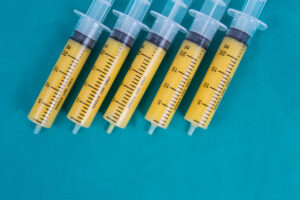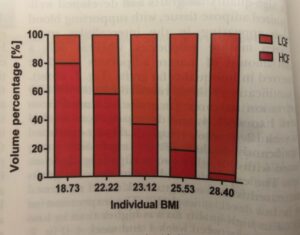 Quick blog. I know these blogs bore most of you to tears (though the geek plastic surgeon in me loves this stuff). When we centrifuge fat is there “better” fat to transfer, so more of the fat survives when you do fat grafting?
Quick blog. I know these blogs bore most of you to tears (though the geek plastic surgeon in me loves this stuff). When we centrifuge fat is there “better” fat to transfer, so more of the fat survives when you do fat grafting?
According to this study “Identification of High Quality Fat Based on Precision Centrifugation in Lipoaspirates Using Marker Floats” in the September 2020 issue of Plastic and Reconstructive Surgery Journal the answer is? YES.
I use a centrifuge ala Dr. Coleman when I do fat grafting. Many studies indicate it helps with fat survival. I would also add it helps make the fat injection more uniform.
The basis of the study is too look at that centrifuged fat and figure out if some of the fat is better to use than others?
- They argue there is a graded density of fat
- Fat in the lower aspirate has more stromal vascular fraction cells, more viable fat cells, and higher concentrations of anti-inflammatory cells and pro angiogenic cells.
- They think the lower fat has a higher percentage of implant volume retention.
They harvested fat, spun it at 1200g for 3 minutes. They used marker floats to grade the density of the fat, forming 4 layers. They then transferred this to mice and evaluated over 12 weeks.
In their discussion they discuss
- The fat separates according to density, with lower quality fat at the top.
- The “high quality fat” has a higher stromal vascular fraction and stem cell density
- The high quality fat has higher graft retention
- High quality fat has higher content of extracellular matrix content (which is thought to give a tissue scaffold and help instruct cell development and may help adipose cell regeneration- ie you regrow your fat)
- High quality fat has smaller adipocytes (which are thought to proliferate better)
- Of note to me in each syringe the percentage of HIGH QUALITY FAT VARIES BASED ON BMI. The higher the BMI, the less the quality of the fat in a given aspirate. (!!) See graph. The red at the bottom is the “high quality” in the aspirate. (So in an ideal world, I should not try to fat graft the orange fat. I should just use the red)

What does this mean to me?
First it tells me centrifuge is good. Second it tells me to not use all of the fat- some fat is better than others. Third, it tells me the “good” fat in my higher BMI patients is smaller than in my lower BMI patients. It looks easy to see in the cute graph above, but in real life it all looks like yellow fat. This study is telling me I should be “throwing out” more of the fat than I am doing currently, and I should be harvesting more in my higher BMI patients (which in their graph was a BMI of 25-28, which is not so high) so I can throw out more of the lower quality fat.
There are times where optimizing like this is just not possible. I am in Northern California and Bay Area women just do. not. have. much. fat. On many patients I am fighting to get anything out of tiny love handles or inner knees. So I cannot just toss the less desirable fat- I am happy to have any of it. But on others I get more fat than I need. I now know how to optimize. If I am not going to use all the fat I collect, I should use the good stuff first.
I love this. I have been fat grafting for over 10 years now and get great results. These studies just keep me honing my technique to get better and better. And if I have to remove a little more fat from those love handles, so I can throw away some of that low quality fat? All the better. Just keep eating that Ben & Jerrys.
The information provided on this website is for general informational purposes only and does not constitute medical advice, diagnosis, or treatment. Always seek the advice of a qualified healthcare provider for any questions regarding your health or medical condition.
